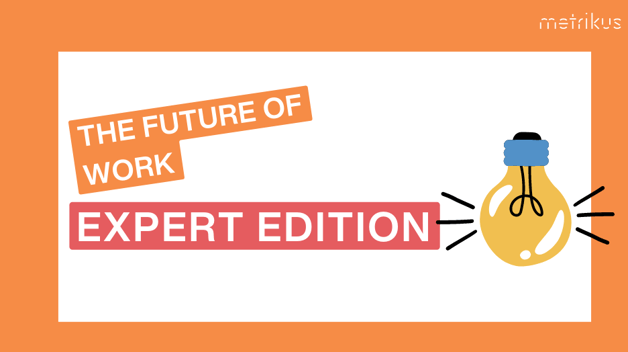The future of work | According to the experts
There’s no two ways about it: the pandemic has completely changed the way people think about work.
There’s been a general shift to a more flexible approach centered around employee experience, comfort and productivity.
As part of our annual magazine, The Measure, we interviewed a range of industry experts to get their thoughts about where the world of work is headed next.
Contents
- Curating the vibe: how creating productive spaces goes beyond the physical – Caleb Parker, founder at Bold
- A tale of two twins: Joining up our thinking around people and spaces for hybrid – Josh McDonald, Global Connected Workplace Lead at Avanade
- From renting spaces to being customer centric – Alfredo Díaz-Araque Moro, founder at Spanish PropTech
- Employee productivity: Data and trust work best for your business – Richard Gregory, Global Head of Value Realization at Avanade
- Effectiveness: when we broaden our view on experience, we can begin to design for productivity – Corinne Murray, founder at Agate Studio
Curating the vibe: how creating productive spaces goes beyond the physical
Caleb Parker, founder at Bold
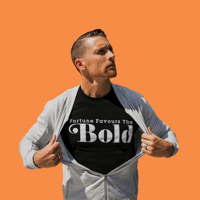
Caleb Parker is the founder of Bold (acquired by Newable/NewFlex in 2019), believes in "challenging the status quo" and is a champion for entrepreneurial and innovative thinking. Caleb has served as founder, Board member, advisor, investor and consultant to numerous startups and small businesses, and has a keen focus on innovation and technology. Caleb has been a guest lecturer, speaker, and moderator for topics such as entrepreneurship, the sharing economy, the future of work and Commercial Real Estate at academic institutions and large corporations.
If you know me, you’ll have heard me say this a million times: we don't need to go to an office to get our work done. During the lockdown years, we learned that most of us really don’t.
But we also learned that the value of face-to-face was felt by almost everyone when we finally were able to come back together.
So if we think about those two things, we don't need to be together every day anymore.
So when it comes to choosing a place when we do come together, the main thing I think we should be looking for is vibe. What vibe fits what we want? And so the questions around that are how do we feel when we walk through those doors? Is it cool? What's the service like? Do I feel taken care of? What's the community like? Can I be inspired here? Those are sort of the things that I think about as an operator; how do I answer those questions for people? How can I provide them a place that's going to help them, that’s going to be better than a home office would, or, say, a local cafe?
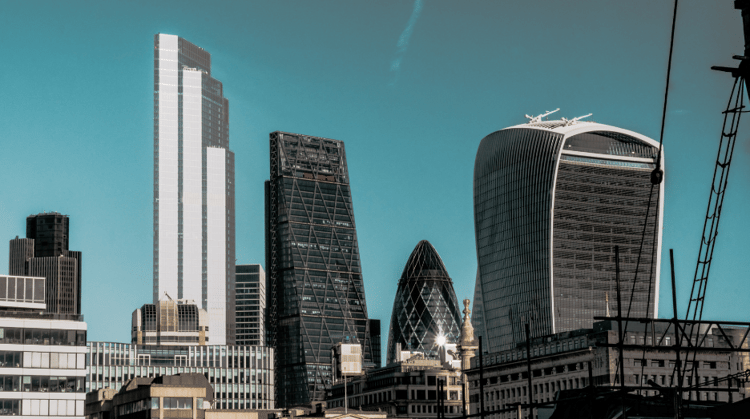
If you ask 100 different people those questions, you're going to get 100 different answers. But if I think about a specific persona, in our case, when we talk about Bold or The XCHG at 22 Bishopsgate, it's people who are creating new things, who are getting ideas out there into the world and building businesses around them. What does that person need? What is going to make them feel taken care of? What is going to motivate them? What's going to make them specifically feel like they're part of a community, like they're around other like minded people.
They're not going to be there every day, so we really have to think about that. So when they do come in, how do they – from a practical perspective – want to work? I was in the XCHG the other day and noticed that one person had moved around four different times. I noticed that she took many breaks throughout the day and when she came back to work, she didn’t want to go back to the same setting. She wanted to sort of shock her system to get her thinking a certain way.
So sometimes you might be sitting by the window and you've got great views and other times you want to go in an area that is perhaps more blocked off by the bookcases and you can just get into focus mode. What I take away from that is absolutely making sure that you have a variety of work environments that people can tap into or plug into for short times.
I almost don't want to say these next points because they’re so basic, but they’re also foundational: Is your workspace easy to access? If the WiFi is good? Are you removing friction? It's all the things that someone could want for in a day that they can get at home. I'm making sure that that's there for them as well.
And I think when it comes to curating the vibe in the community and attracting people that are like-minded, it’s about putting things around the work day. What I mean by that is, some sort of event, or what I’m going to call an ‘attraction’, that makes people say, ‘I'm going to come in because this is going on’. And then as a worker I’m thinking, because this is going on, other people that are like me are going to be there too; it’s about creating FOMO.
So from our side – the operators’ side – it comes back to the customer. We're creating these communities here at XCHG with PropTech and FemTech for example, so we're thinking about what does a FemTech founder need, or someone who’s managerial level in PropTech? Even more broadly, what does anyone with a growth mindset need? You can go really high level with that. And then you can dive in specifically to female leaders, or early stage founders or late stage founders. There's all sorts of ways you can do that, whether you’re a community for innovators and entrepreneurs like us at Bold and XCHG, or a community for photographers or other industries, or a community within a specific company.
We need to be thinking really carefully about who we are serving and create a vibe for them specifically. This is what it comes down to: it's about understanding the people who are using the space, understanding what they need and providing those things.
A tale of two twins: Joining up our thinking around people and spaces for hybrid
Josh McDonald, Global Connected Workplace Lead at Avanade

Josh McDonald, Global Connected Workplace Lead at Avanade, discusses the value of digital twins for workplace planning and strategy.
Firstly, we need to be sure we’re discussing the same thing. As per the Digital Twin Consortium, a digital twin is a virtual representation of real-world entities and processes synchronized at a specified frequency and fidelity.
What’s important is digitizing something which is present in the real world and having a mechanism to keep this up to date. Such a twin can be a reflection of that real-world entity, or a simulation of it.
Let’s start with a twin that helps us understand space and the place(s) in which we work. The office is a prime example. Understanding occupancy by tracking the use of desks, rooms, collaborative areas – and even socially focused areas within an office – we can understand the demands for different types of spaces – are they ad-hoc or connected to a reservation, and how much time is spent in each?
This depth of understanding can draw out unmet needs. For example, if large boardrooms are used for ad-hoc, smaller-sized meetings, it may be because the resources in these rooms, such as virtual meeting apps, allow convenient collaboration with people working from home. We can also combine this with environmental conditions to understand whether areas are used for ‘noisier’ types of work such as workshops, or quiet ‘heads-down’ activity. This is on top of the opportunity to see whether you are heating or cooling these areas relative to whether or not they are used.
Creating a digital twin of people – here, a workforce – is an opportunity to capture a richer picture of the habits and demands of that workforce.
On an individual level, an employee can also gather insights about their own working life by tapping into data from sources like Viva Insights.
Building a data picture of people can create concerns about privacy or a culture of micromanagement. Fortunately, there are clear ways to mitigate or even remove this risk. Individual-level metrics can be limited to only the individual they refer to. For a workforce-oriented twin, the power is in the aggregation of the data, which means that it is always depersonalized. The primary focus of this data is to identify long-term trends to inform strategy and decision-making.
Creating insight by combining the two is where even deeper value can be unlocked. Matching up when people have booked in-person meetings or a desk at the office can be combined with space utilization data; this presents an opportunity to not just reshape or repurpose the office but also influence the working culture. For example, if you know who is going into the office, you’re able to decide when to go in, and from there plan your day around that. This gives hybrid workers control to plan for collaborative or lone work.
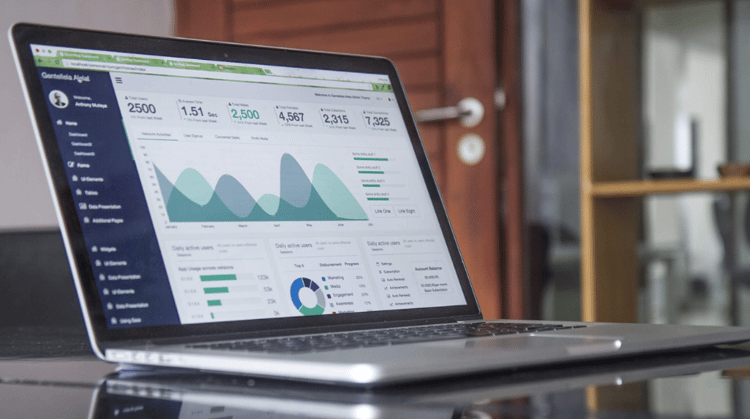
From renting spaces to being customer centric
Alfredo Díaz-Araque Moro, founder at Spanish PropTech
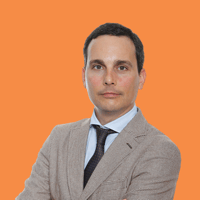
Alfredo Diaz-Araque Moro has extensive experience in Real Estate for (over 20 years), becoming involved with PropTech and digital transformation in the industry from 2015. He launched Spanish Proptech in 2017, the first non-corporate initiative in the Spanish language in this area. He is a teacher in different business schools and a speaker in PropTech events. He has worked in companies like Rodamco, Banco Santander or BNP Paribas as well as startups like Citibox, Spotahome and Prontopiso where he was the CEO.
“Location, location and location” has been the key principle in the Real Estate industry. If you have a good location, who cares about the people? But technological and social changes have shown up in recent years transforming how we live, how we work and how we enjoy our free time. So the industry has discovered a new key element: the customer.
Wait a minute – we have a customer?! We do, and it’s the worker.
These are not my own thoughts, but I endorse them word for word. These thoughts were exposed by Méka Brunnel, CEO at Gecina, in Propel by MIPIM held in Paris in September 2020 in the peak of the COVID-19’ crisis.
Brunnel said that crises do not create trends but accelerate them and that is what happened in recent years. While other industries have focused on customers and have taken care of them for years, Real Estate has started to focus on occupants because of the health crisis.
Shopping centers have been ahead but now all the sectors in the industry are developing their strategies that put the customers in the center.
Rental residential, for example, has created more comfortable spaces to live, with common spaces to interact, cook or relax.
Logistics is now not only for storing goods. The warehouse robotization draws specialized workers who spend 40 hours a week at work and have needs that must be covered.
It is true that certifications like WELL, since 2014, have aimed to “transform our homes, offices, schools and other environments by placing health and wellness at the center of all design/build decisions”, but it has been more a nice to have than a must.
The workers’ needs have changed
In the first months after the height of the pandemic, workers asked for hybrid systems where the time in the office should be devoted to collaborating and sharing knowledge and tasks (meetings, etc.). But recent surveys show a new perspective: workers want office spaces that allow them to focus on their work. That is the new driver to come back to the office.
The 2022 U.S. Workplace Survey from the Gensler Research Institute shows this trend and brings to light the fact that workers do not feel that their office spaces enable focused work. The 2022 results put that concept at an all-time low from 15 years ago.
In the same survey, the second reason to come back to the office is the access to technology.
Clear as crystal. Workers ask for a new office concept: they want to have the required elements to be more productive. That request is not only for their employers. This flows to workspace owners too.
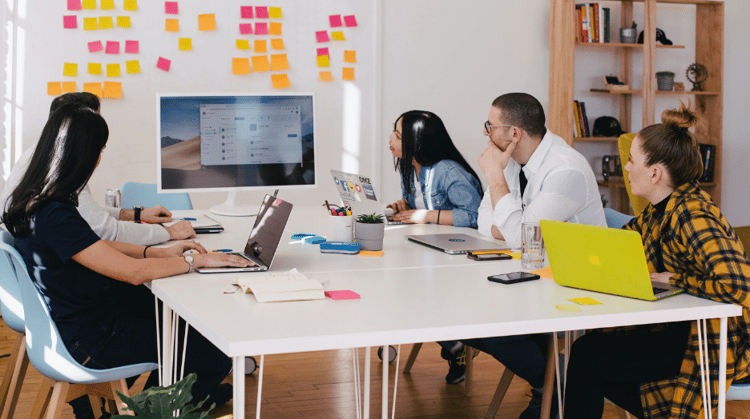
Location, location, location + customer experience
We come back to the beginning of this article: Location yes but with a customer-centric component. It is not good enough just to rent square meters anymore. It is to offer experiences and more comfortable spaces to work.
If we want more productive spaces there is only one way: to ask for, understand and offer what our final customer – the worker – needs, wishes and hopes for.
The Real Estate market is in the middle of a transformation: we are moving from renting spaces to being more customer centric. Whoever reaches this new mantra before the rest will have more chances to succeed in this new market paradigm.
Employee productivity: Data and trust work best for your business
Richard Gregory, Global Head of Value Realization at Avanade
The adoption of a hybrid work model is arguably the biggest shift in human behavior we’ve seen in a lifetime, says Richard Gregory. Here, Richard dives into strategies that foster more efficiency and effectiveness at work.
I don't know any organization that's going to be successful in the future if they don't offer hybrid work. The pandemic has changed working patterns and the new workforce demands we’re seeing are, in truth, kickstarting better business outcomes.
At the start of the pandemic, many organizations had to adapt overnight. Two years went by, and suddenly we think that we can work productively in a hybrid environment. We need to understand how physical real estate is being used to successfully explore structures in our physical workspace that enable this new world of working. Are we connected to our digital workspaces? When you're in the office, how easy is it to log into the WiFi or check into a desk? How easy is it to find out who's in the office and who's not to make sure that you go in when the rest of your team is there?
Then there are the expectations and trust issues surrounding hybrid. Microsoft’s Work Trends Index Report (September, 2002), revealed a vast chasm of thought between workers and management: 85% of CEOs found new working patterns less productive, yet unsurprisingly, 87% of employees felt quite the opposite, finding hybrid productive.
There’s also a disconnect that we haven’t quite solved because people aren't seeing each other. Cross-team collaboration reduced by 37% during the pandemic and this way of working is directly linked to business innovation. Also, CEOs don't have a pulse-check on the business – it's not as easy for execs to walk around the office and get a sense as to what’s really going on. Companies need to put different strategies in place if they want their employees and organizations to thrive.
Give voice to experiences
For managers, facilitating open conversations across peer and team networks means that individual teams can come up with their own ways of working that are centered on accountability and trust, as opposed to leaning on the organization to do this for them. We help these conversations evolve so that rules are created within a group or team, as opposed to being dictated by senior colleagues.
It’s interesting to consider ‘productivity paranoia’ – the term Microsoft coined while researching workplace behavior. I believe this challenge comes down to corporate culture. If an organization has created an environment where there’s a lack of trust, employees are constantly having to prove that they’re productive – in what is probably, and ironically – an already unproductive environment. Leaning in and establishing trust, however, can have a significant impact. All 60,000 Avanade employees are now enrolled in a self-regulated flexible working scheme, and we’ve seen a measured improvement in productivity and employee satisfaction.
When helping organizations improve workplace experience, you can look at things like pulse tools and pulse surveys for intelligence around employee satisfaction, and these things link directly to employee productivity.
But it would also be interesting to compare employee engagement surveys with pulse trends to understand how people feel about office-based versus home-based working. Are we really understanding where and how people feel they work best? Many workplace experience apps make you believe you’ve been more productive because you earn a few widgets.
.png?width=750&height=420&name=22%20Employee%20experience%20(2).png)
Today, we can collect deeper data: how we interact in virtual meetings, what emails and chat messages we send, and whether we're multitasking on a conference call. These are meaningful signals that can indicate whether hybrid is truly successful or not. You’ll also need context if you’re going to implement the right structures, processes, and policies for productivity enhancement.
Looking at recent work surveys, people in their 50s are most likely to want to work fully remotely and hybrid. Those that have just started their careers, like interns and graduates, are actually the ones who are crying out to be in the office – the exact opposite of what we might expect. Equally, you’ll need to look at the different work that needs to be done within an organization: it's not as clear cut as saying ‘everybody in the UK can work three days a week’ because if you're in product management, the chances are you need to be in a collaborative environment.
Why merging physical and digital workspaces is critical
Assuming that everything's going to be all right because the CEO or HR has decreed that everybody can work in a hybrid manner, doesn’t mean that concrete steps have been taken to accommodate hybrid. Obviously, this impacts when you think about sustainability and office space as being one of – if not the most expensive – costs within an organization.
There are some huge opportunities with hybrid work from an employee experience as well as a financial and macroeconomic perspective. From an organizational standpoint, think about how to change the physical workspace and morph physical and digital workspaces together to break down frictions and barriers and make life as easy as possible for all your employees. In doing so, you’ll create better teams and gain better business outcomes. Tech must be implemented in a considered way to power employee engagement, trust, and productivity.
Effectiveness: when we broaden our view on experience, we can begin to design for productivity
Corinne Murray, founder at Agate Studio

Corinne Murray is founder and CEO at Agate, a future of work, workplace and employee effectiveness consulting studio. For over a decade, Corinne has been a thought leader and expert at companies like WeWork, American Express, RXR and CBRE where she created and tested new workplace and organizational designs to foster healthy employee experience and company culture through the lens of effectiveness and productivity.
Hot take: the way we have designed for employee experience in the past decade has done more harm than good and, unless we change course, we’re going to repeat our mistakes by solving the wrong problems. And this will be costly.
Yep, I said it. I – a workplace strategy, change management, employee-experience bleeding heart – will die on this hill.
Why? Because, for a long time, companies have approached "experience" with the objective of "how do we keep you in the office?" rather than "how do we help you do the best work that serves you and the business?"
Employee experience has been broadly defined by perks and amenity wonderlands.The mission with these kinds of offerings was to reduce distractions from the outside world – transportation, company offsites, dining and hospitality, laundry, fitness, healthcare, childcare, and more – to keep employees in the workplace, betting on the logic of “more hours in the office = more work done”.
The crucial thing – and the reason I’ll die on this muddy hill – is that this definition of employee experience almost entirely ignores solving for and supporting employees’ ability to get work done, feel productive, and drive effectiveness for their organizations.
This is what Agate has been zeroing in on. As the world faces economic headwinds, workplace and experience advocates need to be exacting with how we demonstrate return on investment in programs and processes that don’t directly connect to a company’s bottom line. It’s something we need to be masters of, regardless of the economic landscape, but times like this challenge us to broaden our aperture on how we define experience and continue building features for the future of work. We have a lot of opportunities in 2023, these are the ones I’m the most excited by.
Ways of working > RTO
Repeat after me: Return to Office plans are not going to save the day.
With RTO, we are coming at the problem from only one angle. RTO plans solve the “when,” and “where” of the future of work and place puzzle, but it doesn’t solve for the “why,” and “how” pieces.
Think about it, how many times have you been in the office in 2022 with the goal of being with your teammates and collaborating, but you’ve wound up on video calls the whole time? Being physically together and talking through screens might be an even more demoralizing experience than when we were stuck physically separated and talking through screens in 2020. What’s the point of being in an office together if we’re not actually going to *be* together?
Companies need to accomplish two things that will evolve their RTO plans into realistic and dynamic programs that work for the employees just as much as they work for the company. First, they need to create a clear and flexible framework around the types of work activities that their employees perform (socializing and wellness count in here, too!) along with when and where they can happen successfully. Second, they need to spend time working with teams as they adopt these new behaviors.
This is not a one-time communication strategy, but a collaboration that supports individuals and people leaders as they adjust to radically different norms and behaviors over time. We can easily fall back into Field of Dreams thinking. Once we build the thing, we assume that it's there, and everyone knows how to use it, and the job is done. But that’s rarely the way reality plays out.
According to a 2009 study published by the European Journal of Social Psychology, Philippa Lally determined that, while it takes people 66 days, on average, to adopt a new habit, for some it can take up to 254 days. RTO initiatives plan out a month’s worth of programming and measurement at most, let alone eight 8 months. We cannot underestimate the effort that goes into behavior changes, nor the resources and time required. Don’t forget, many people were not called back to their workplaces until September 2021; 540 days after March 2020. It’s no wonder this has been such an uphill climb!
Still today, there is a broad swath of workers who see inconvenience and friction when the idea of coming back to the office is brought up. It’s up to companies to create a shared vision – meaning, you cannot decide without balancing the needs of the business and the preferences of your employees – for what the workplace does to enable the work to be done (to contribute to the company’s bottom line) and the culture to be preserved and strengthened.
.png?width=750&height=420&name=22%20Employee%20experience%20(3).png)
The problem with meetings
The problem with meetings is that they tend to get in the way of work.
I can’t begin to count the times where I’ve been excited for 5pm to roll around because I could finally start to get my work done and I know that I am not in the minority. Far too many of us have had this experience far too many times.
So the question is: when does a meeting actually work? If we don’t get to the bottom of this, I fear we will continue living in the “this meeting could have been an email” memeworld.
Turns out, it’s back to back (to back to back to back…) meetings that are the problem, especially virtual ones. Microsoft has shared visuals from a small study they conducted that showed the consequences of several back to back meetings on brain activity and the results were, unequivocally, bad. Without breaks in between, the brain experiences continuous and pronounced levels of stress after just four consecutive meetings.
The working world needs to better understand several things about the impact that meetings – especially virtual ones – have on the brain, but the most practical questions are:
1. What is the “tipping point”?
2. How long does it take to rebound from that place?
If we were to have access to these kinds of benchmarks, companies would be able to design truly human-centered policies, technologies, and behaviors around this knowledge. It could be amazing. Unfortunately, there’s no way for us to understand the complexities that would go into answering those questions, but we’re not left entirely empty handed.
We now know there is a scientific point of “too much” and we can design the ways we work in the other direction. Even this directional data gives us tremendous insight on how we can correct course. Just like coming up with clear guidelines around when and why to come into a workplace, it’s up to organizations to create similar frameworks for what reasons meetings should be scheduled (reduction), what time of day these meetings should be happening (containment), and how information gets shared to those not in the discussion (distribution).
The benefits to addressing our unhealthy relationship with meetings are twofold. In this seemingly utopian future where meetings have to meet particular standards in order to be scheduled, the meetings that do occur are successful because there are clear pathways to resolving whatever challenges that called for the meeting in the first place. The only recurring sessions you have are for personal and professional development. A world with fewer meetings where we can get our work done in working hours, not get burnt out from endless meetings, find the mental space to be creative and innovative (for the betterment of your team and organization), actually spend time with colleagues, and live a life outside of work? It sounds dreamy, but it’s not far-fetched.
Productivity + Experience = Effectiveness
Productivity has become an increasingly ugly word over the past decade. What started with the highly instagrammable #HustleCulture has devolved into companies installing surveillance software on devices to monitor employee activity to make sure they’re working when they claim they are.
In October, The Washington Post wrote that worker output in the United States saw the most precipitous drop since 1947. The article defines productivity as “the measure of how much output in goods and services an employee can produce in an hour.” This is the cleanest and simplest way to define it, but it lacks the necessary context. Productivity is notoriously hard to measure. No two people work the same way, making benchmark data elusive and unreliable. However, even this argument is half-baked. Productivity has just as much to do with an individual’s or a team’s resources, surroundings, and conditions, but there’s no way to capture those data sets.
In 2019 I started researching productivity with the hopes of finding ways to measure more than just the output that someone produces. If inputs like intentionally designed workplaces, technology, HR policies, and more can influence a company’s culture, why wouldn’t they influence a company’s ability to be productive and, therefore, revenue-generating?
It turns out, there aren’t any real metrics that encompass what I was looking for, so I started piecing together the definitions for productivity with that of my definition for employee experience and arrived at “effectiveness”.
To me, effectiveness is what we’ve really been after the whole time. Productivity is about getting something, anything done. It doesn’t account for the quality of the work that you do, it doesn’t account for how easily you were able to get into a state of focus, it doesn’t account for the whether you have young kids competing for your attention, or if you know how to get to the 27th floor of your company’s Bangalore office for that big meeting when you flew in on a red eye that morning. Effectiveness does because it accounts for the human experiences that can either aid or interfere with your ability to be productive at any given moment.
When we design for productivity, we are designing for humans that we’re unintentionally wishing are machines. It’s certainly easier and more predictable this way, but it’s also a large part of how we got where we are. Companies, for better or worse, have created cultures and environments that struggle to account for human nature. When we design for effectiveness, we design with the realities in mind that humanity carries entropy with it wherever it goes. It’s neither good nor bad, it just is what it is. Effectiveness allows the systems and spaces we design to be responsive, not reactive, and flexible enough to learn with their users; the exact thing that we Real Estate and workplace folks need for the challenges at -hand.
The challenge at hand for our industry is no small one, but it’s one that can fundamentally change not just our relationship to space, but our relationship to work and society. Who knows, maybe I am talking about utopia, after all. It’s up to us to turn this theory into reality.
Want to get more content like this? Check out ‘The Measure – Sizing Up PropTech, Commercial Real Estate and the Modern Workplace’, where these articles were originally printed.

